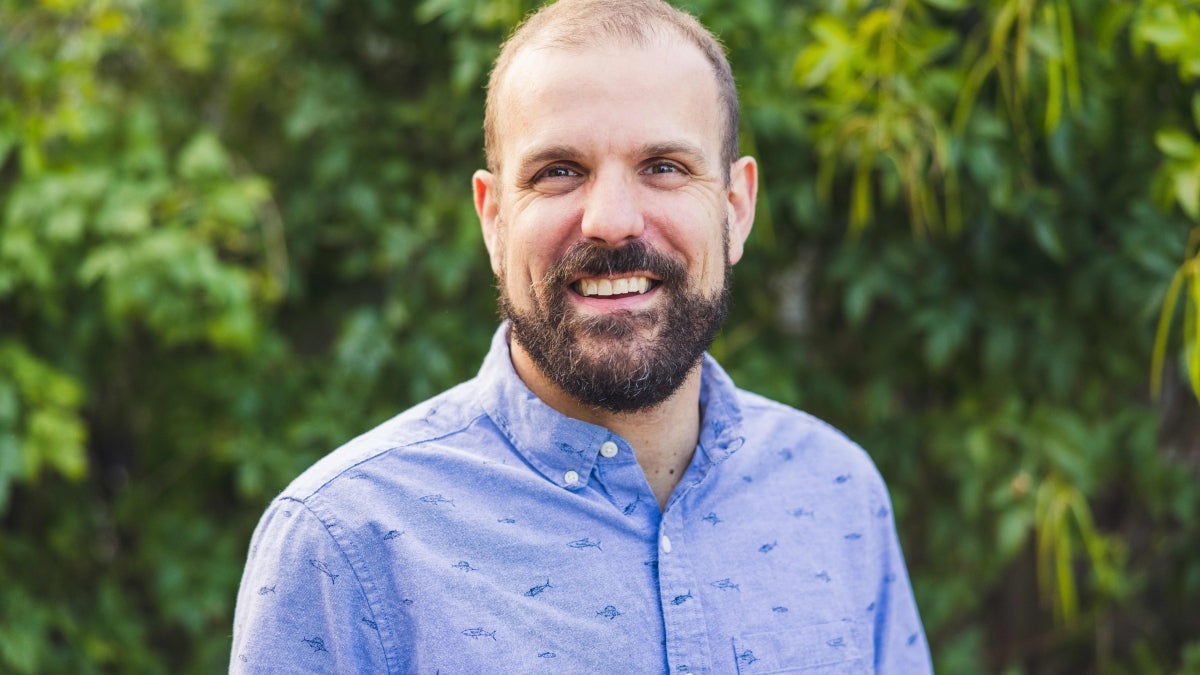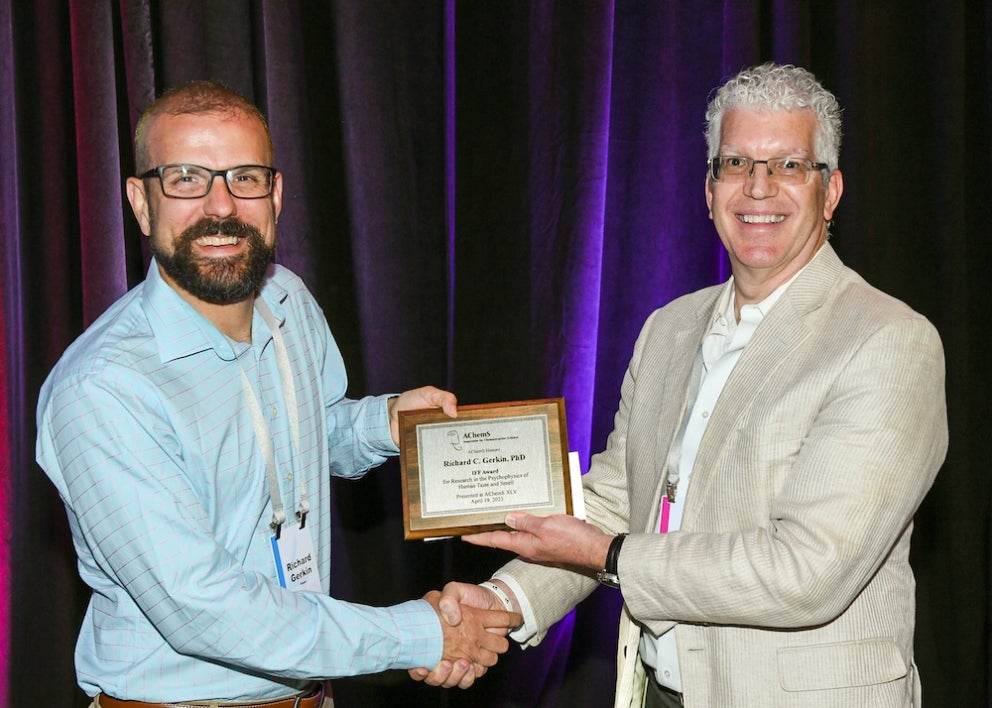ASU professor redefines how we understand, predict smells

Richard Gerkin is an experimental and theoretical olfactory neuroscientist and psychophysicist. He is a research professor in the School of Life Sciences and affiliated faculty at the School of Mathematical and Statistical Sciences.
Have you ever wondered how we smell? Olfaction is one of the most critical senses for humans and other organisms.
Richard Gerkin, an Arizona State University research professor in the School of Life Sciences and affiliated faculty at the School of Mathematical and Statistical Sciences, has dedicated his career to understanding the complexities of olfaction.
Gerkin is an experimental and theoretical olfactory neuroscientist and psychophysicist. Psychophysics is the science connecting stimuli to perception and their measurements. He is interested in cracking the olfactory code and accelerating the science and technology of smell. His work ranges from odor perception to neuroinformatics.
“I like to dig into the data, organize it and try to understand the relationships in play and the underlying processes that give rise to them. This is where I tend to dig deepest,” he said.
Understanding the sense of smell is not easy, but one can start by investigating how odorants are perceived. Most small molecules are odorants with a specific structure that will bind to the olfactory receptors in our nose, and the brain will then translate them into smells.
However, one of the biggest challenges that has troubled neuroscientists for decades is determining how the structure of odorants relates to the smells we perceive.
A new study, co-authored by Gerkin and published in a recent issue of Science, introduces a novel approach to mapping the complex relationship between molecular structure and odor perception. It was initially a collaboration between scientists across the country from Google Research, The Monell Center, The University of Reading (UK) and ASU, and continued through Osmo, a startup spun out from Google to extend and apply the research. Gerkin was involved first as an ASU professor, then later as an employee of Google Research and then Osmo.
The research team developed a new model that could transform our understanding of how we perceive smells. For instance, wavelength maps to color and frequency maps to pitch, but how does structure map to smell? To decipher this enigma, scientists have relied on modality-specific maps that translate input, in this case, wavelength, frequency or structure, into a corresponding output of color, pitch or smell.
Until now, attempts to build a modality-specific map for smell have been unsucessful, as they lack accuracy and interpretability and fail to generalize new smells. Gerkin and collaborators used Graph Neural Networks (GNNs) to create a principal odor map (POM), a digital representation of odor perception that accurately represents the relationship between molecule structure and smell.
“Our approach was to use a GNN, which treats each molecule as a collection of nodes (atoms) and edges (bonds), thus summarizing the molecular structure. We paired this with the largest known data set of odor descriptions of those molecules (i.e., what they are known to smell like). Training that modeling framework on those descriptions produced the model that we used,” Gerkin said.
“For the study, I helped to put the experiment data in context and also helped to provide a clean interface between models and data. Making sure that model predictions and empirical data are well-aligned is really important to me,” Gerkin said.
ASU Research Professor Richard Gerkin (left) receiving the IFF Award from Paul Breslin, president of the Association for Chemoreception Sciences. Photo courtesy Richard Gerkin
The approach has a broad capability of predicting odors and paves the way for digitizing them. This map of smell is a big step forward and can help scientists in chemistry and neuroscience study how our sense of smell works.
“We can then use the POM to ask questions about other relationships between molecules, such as how similar a pair of molecules will smell, or how strong a molecule will smell. We can also make predictions about other kinds of odor descriptors that weren't used in our study,” Gerkin said.
The implications of this research are far-reaching. With the POM's ability to predict odor quality accurately, it paves the way for the digitization of odors, offering exciting possibilities for future applications.
Gerkin emphasized some of the main implications of this research: “People want to discover new molecules or mixtures of molecules that have certain smells — for example, in flavor, fragrance and insect control applications. Odor is predictive of health and disease, and mapping the relationship between different smells and different metabolic states could help accelerate disease diagnosis,” he concluded.
Beyond his latest publication, Gerkin has excelled in the field. He recently received the prestigious IFF Award for Research in the Psychophysics of Human Taste and Smell from the Association for Chemoreception Sciences (AChemS).
Gerkin said it meant a lot “to have my colleagues in the field indicate that my work was meaningful and important to them; also, since a lot of that work reflects collaborations with others in the field, it was a positive sign that I helped advance those collaborations."
This accolade is awarded each year to an outstanding junior scientist in the field of psychophysics of human taste or olfaction. Gerkin’s research over the years has demonstrated excellence and the promise to emerge as a leader in the field with his contributions to the measurement and description of how stimuli give rise to perception.
“I love working with other people in this field, especially those with skills or resources that complement my own. Sometimes someone with an interesting theory needs an experimentalist who can figure out how to test it, and sometimes someone with a revolutionary new dataset needs a theorist to put it into context,” Gerkin said.
More Science and technology

Student exploring how AI can assist people with vision loss
Partial vision loss can make life challenging for more than 6 million Americans. People with visual disabilities that can’t be…

Newly identified viruses found in dolphins
In a new study, researchers from Arizona State University together with national and international collaborators have identified…
ASU Interplanetary Lab celebrates 5 years of success
Five years ago, an Arizona State University student came up with the idea of creating a special satellite in what was then the…
